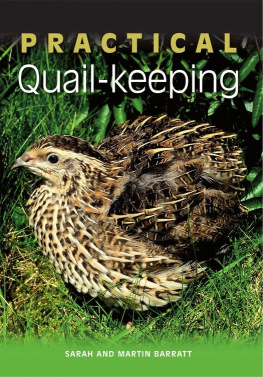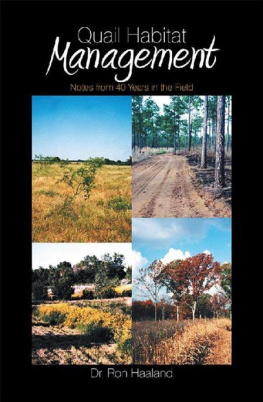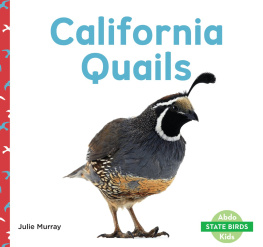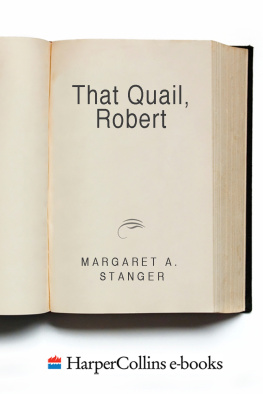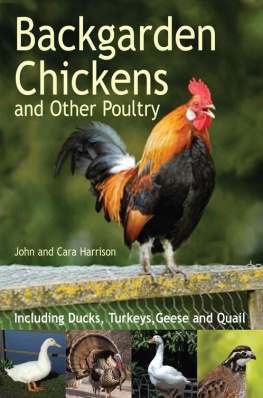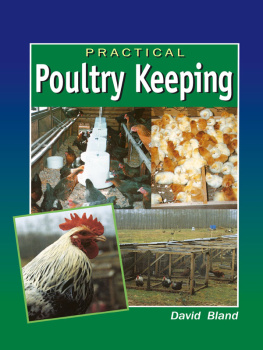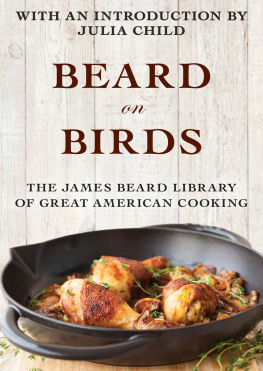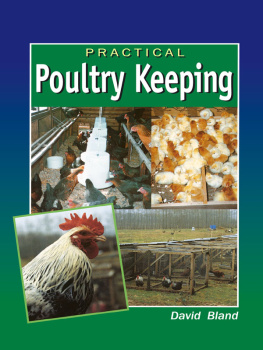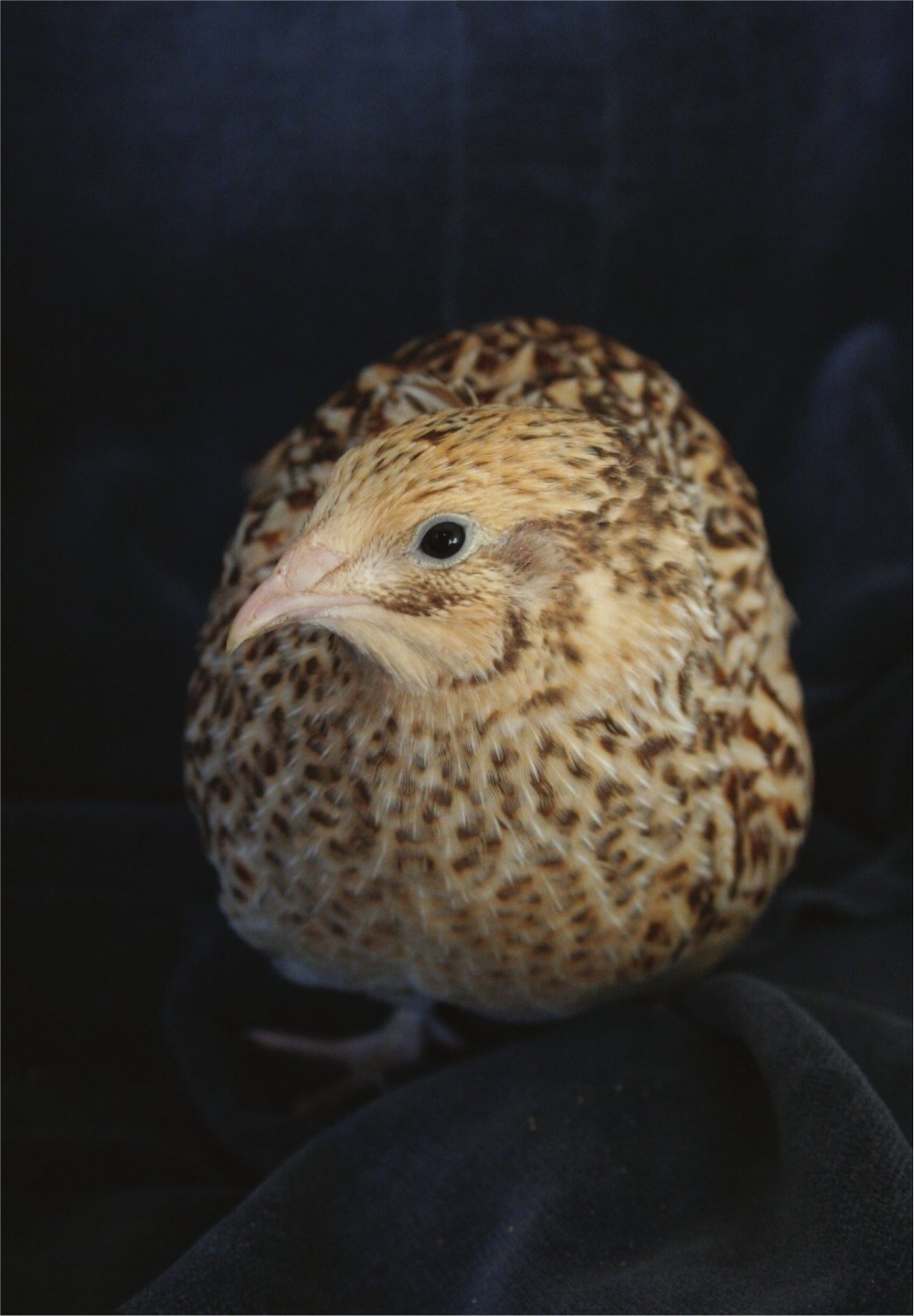First published in 2013 by The Crowood Press Ltd, Ramsbury, Marlborough, Wiltshire, SN8 2HR
www.crowood.com
This e-book edition first published in 2013
Sarah and Martin Barratt 2013
Sarah and Martin Barratt assert their moral right to be identified as the co-authors of this e-book. All rights reserved. This e-book is copyright material and must not be copied, reproduced, transferred, distributed, leased, licensed or publicly performed or used in any way except as specifically permitted in writing by the publishers, as allowed under the terms and conditions under which it was purchased or as strictly permitted by applicable copyright law. Any unauthorised distribution or use of this text may be a direct infringement of the authors and publishers rights, and those responsible may be liable in law accordingly.
ISBN 978 1 84797 524 9
All photographs are by Sarah Barratt unless otherwise indicated
This book is the end result of many years experience in keeping and breeding quail at home but we also need to acknowledge the many interesting people we have met over the years, including those kind souls on various poultry forums who patiently gave us advice and encouragement while we were starting up. One of the most satisfying aspects of the hobby is the social side, and we would like to tip our hats to those people we have passed the time with at various country shows and events. All have been happy to talk and share their experiences with us, and it is to their collective enthusiasm and friendship that this book is dedicated. We would also like to thank friends and family who have supported us in getting this book from concept to printed page.
Finally we would like to thank Professor Darrell Evans, Professor of Developmental Biology at Brighton and Sussex Medical School (and Dr Sophie Ainsworth and Dr Rachael Stanley), for providing the images of the developmental stages of the quail reproduced in the chapter on breeding birds, and also Emma Saunders from Castle Vets Ltd, Farnham, and Martin Smith from Westpoint Veterinary Group for their kind help and advice on all medical matters pertaining to poultry.
The authors hold the copyright for all photography and associated imagery unless otherwise indicated, and images may not be reproduced without the express written consent of the relevant copyright holders. We would like to thank Duncan James at John Wiley and Sons Ltd for kind permission to use the photographs of quail development in and also Virginia Lee, Jason Vaughnley and Regency Poultry for supplying other photographs used in the book.
DISCLAIMER
The advice contained in this book is intended as a general guide to those people considering keeping quail as a hobby and not for commercial purposes. The suggestions, hints and tips that constitute the bulk of this book are the combined result of many years practical experience by the authors and the anecdotal experiences of other hobbyists within the poultry community. The guidance contained herein is offered in good faith and with the intention of furthering your enjoyment of this fascinating hobby.
That said, this is an increasingly litigious age, and the authors and publishers are obliged to point out that they accept no responsibility for any loss or consequential loss, howsoever caused, as a result of following any of the advice contained in this book. In this respect all activity is undertaken entirely at your own risk. In all cases and without exception, anyone who does not feel suitably confident to attempt any or all of the practical activities outlined in this book should always seek the advice of a suitably qualified person(s) as directed in the relevant sections.
The idea for this book came after several years experience of keeping quail as hobby breeders. What started in 2008 with four birds (three hens and a cock) and a small garden hutch, bought as a surprise present, then snowballed into a full-blown hobby and quickly saw four birds become twenty and then fifty and finally into a flock of over 200 birds. We were already experienced in keeping a few chickens at home, so we were not complete poultry virgins by any stretch of the imagination, but undoubtedly quail have their own peculiarities and foibles. Through a mix of trial and error, applied common sense and accumulated wisdom we were able to find out all about these fascinating little birds keeping, breeding and selling both birds and eggs.
Keeping quail is becoming increasingly popular but more than one person has mentioned to us that how to keep quail books were fairly thin on the ground, and we received a stream of emails and telephone calls from people asking about different aspects of the hobby. After consideration we decided that it would be interesting and informative for others to share our own experiences, practices and solutions, to help those of you who may be keen to get started or would just like to dip a toe into the water and see if the hobby is for you. As such this book is aimed equally at first-timers and more experienced keepers.
For those readers who have never kept poultry before, it can seem quite daunting at first and many people are probably put off at the first hurdle but please be reassured that it is much easier to get started than you might think. Keeping quail can be as cheap, or as expensive, as you want to make it but also be warned, it is addictive and once you really get into the hobby you will wonder how you ever had time to do anything else.
We wish you every success in your new venture into quail-keeping, whether you are dabbling for the first time or you are a returnee, and hope that you will find both the experience and this book equally rewarding, interesting and stimulating.
Sarah and Martin Barratt, August 2012
Quail are ideal birds to keep for the first time poultry keeper. They are amazing, plucky little birds whose small size belies their hardy nature. Unlike chickens quail do not take up much space, do not make much noise, or make much mess, and will happily rub along with all other garden dwellers although, as with most forms of small poultry, they will need protecting from cats, dogs and corvids (rooks, crows and the odd sparrowhawk).
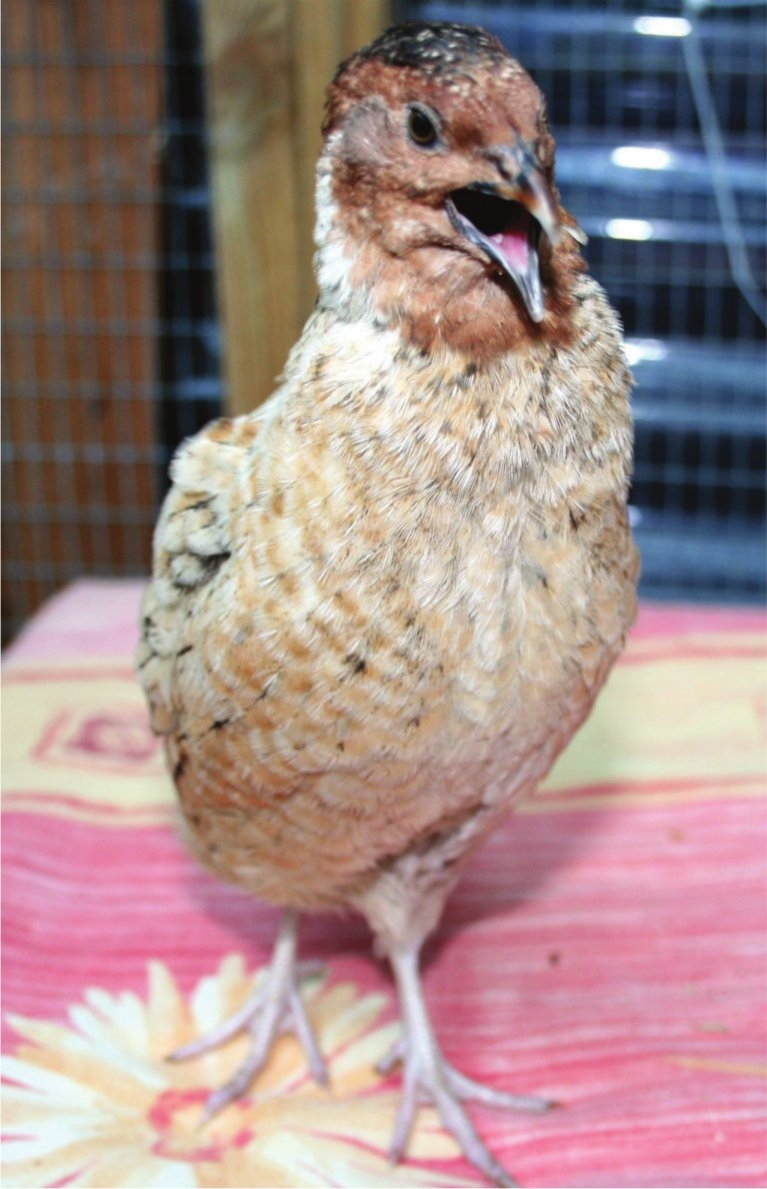
A cock bird crowing
They are also extremely child-friendly, and your children will enjoy helping you look after your birds, feeding them, handling them and collecting the eggs from the quail house (or runs) every morning. Quail are also interesting characters in their own right we also breed Pekin bantams and other breeds of chickens, but it is invariably the quail that people are most curious about when they visit there is something about these little birds that people like and admire.
As a nation we seem on the verge of entering a new era of domestic poultry-keeping. In recent years there has been a move away from intensive rearing and farming to a much greener, bird welfare-friendly alternative. Television personalities and celebrities like Jimmy Doherty (Jimmys Farm) and Hugh Fearnley-Whittingstall (River Cottage TV series and books) have been instrumental in helping drive the current trend for keeping a few chickens at home and promoting the suburban smallholding and good on them both for doing so. Hugh Fearnley-Whittingstall in particular has done much to raise awareness of intensive poultry farming and has shown that there is a much more equitable way of treating livestock in general and poultry specifically respecting the birds in their own right but also recognizing that they are a source of food, either as egg producers or as fresh meat.

